Table of contents
1. Three Lions Redesign Controversy Explained
2. The new Grassroots brand
3. Tackling the diversity issue
4. Star-Studded All Inclusive Video
5. A story told through symbols
6. Examining The Three Lions Redesign
7. A bit of English History
8. Trouble in paradise
9. What Did They Achieve?
Football’s Three Lions Redesign Controversy Explained
You may have seen in the news that the Football Association’s three lions redesign caused something of a stir amongst football fans recently. This new branding design became the subject of controversy as the three male lions of the original crest were replaced with a lion, lioness, and lion cub.
Some of the more vocal fans took to Twitter to express their anger at what they felt was a replacement for a key part of their national heritage while others aimed their frustration at what they felt was an effort to make the logo more “woke.”
But once the dust settled on the histrionics it became quickly apparent that all the fuss had been over a misunderstanding. The original three lions crest wasn’t going anywhere and the three lions redesign was part of a new platform launched by the Football Association called England Football and the new logo will appear alongside the original England badge.
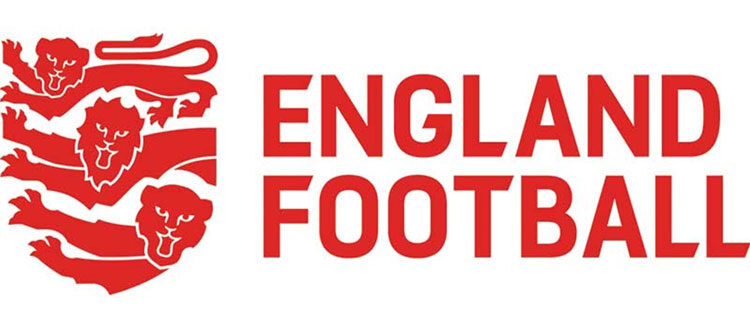
The new Grassroots brand
England Football is the consumer-facing brand of the Football Association and their aim is to represent and champion grassroots football as well as the fans and volunteers. The project, which has been 18 months in the works, aims to be a one-stop shop for all things football in the UK.
Community football initiatives like McDonald’s Superkicks, BT Playmaker and others will all be featured on the England Football site and the Find Football feature seeks to help in connecting people with football opportunities near them.
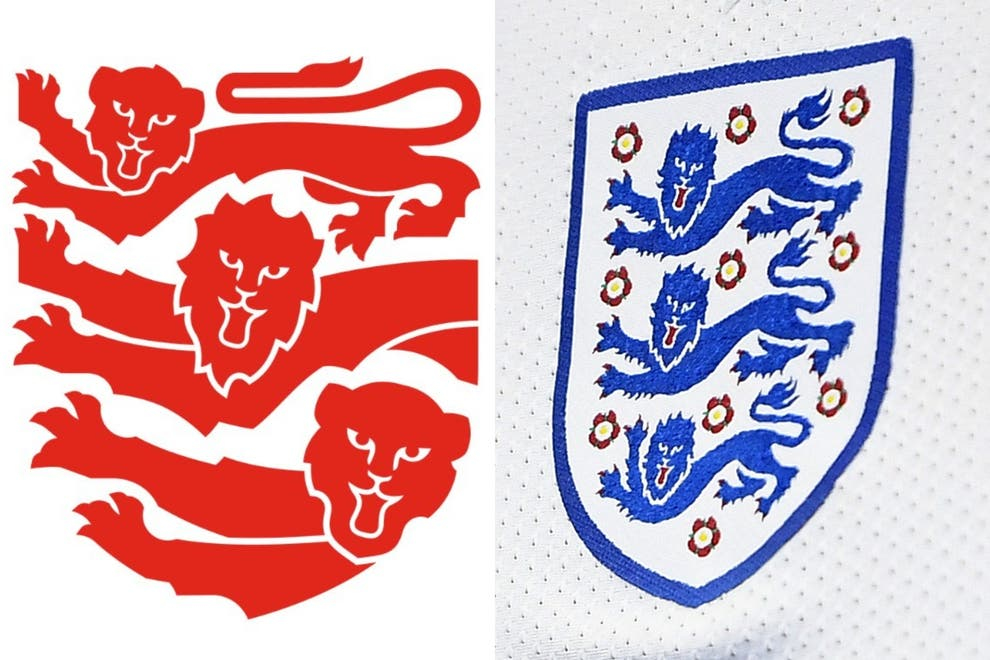
Tackling the diversity issue
The ugly face of racism is still an issue in world football, with a number of high profile cases making the news and the England team taking the knee in solidarity with all races and creeds involved in the game. England football authorities are keen to show a united front in the fight to eradicate it for good.
As the England logo suggests, diversity and inclusivity are key to their message and they aim to bring football to people from all demographics. Included on their site are ways to find disabled football programmes such as blind football and powerchair football.
The initiative also features the My England Football free-to-join rewards programme as a way to recognise their fans with “money-can’t-buy” benefits and exclusive offers like meeting footballers and the chance to play at Wembley Arena.
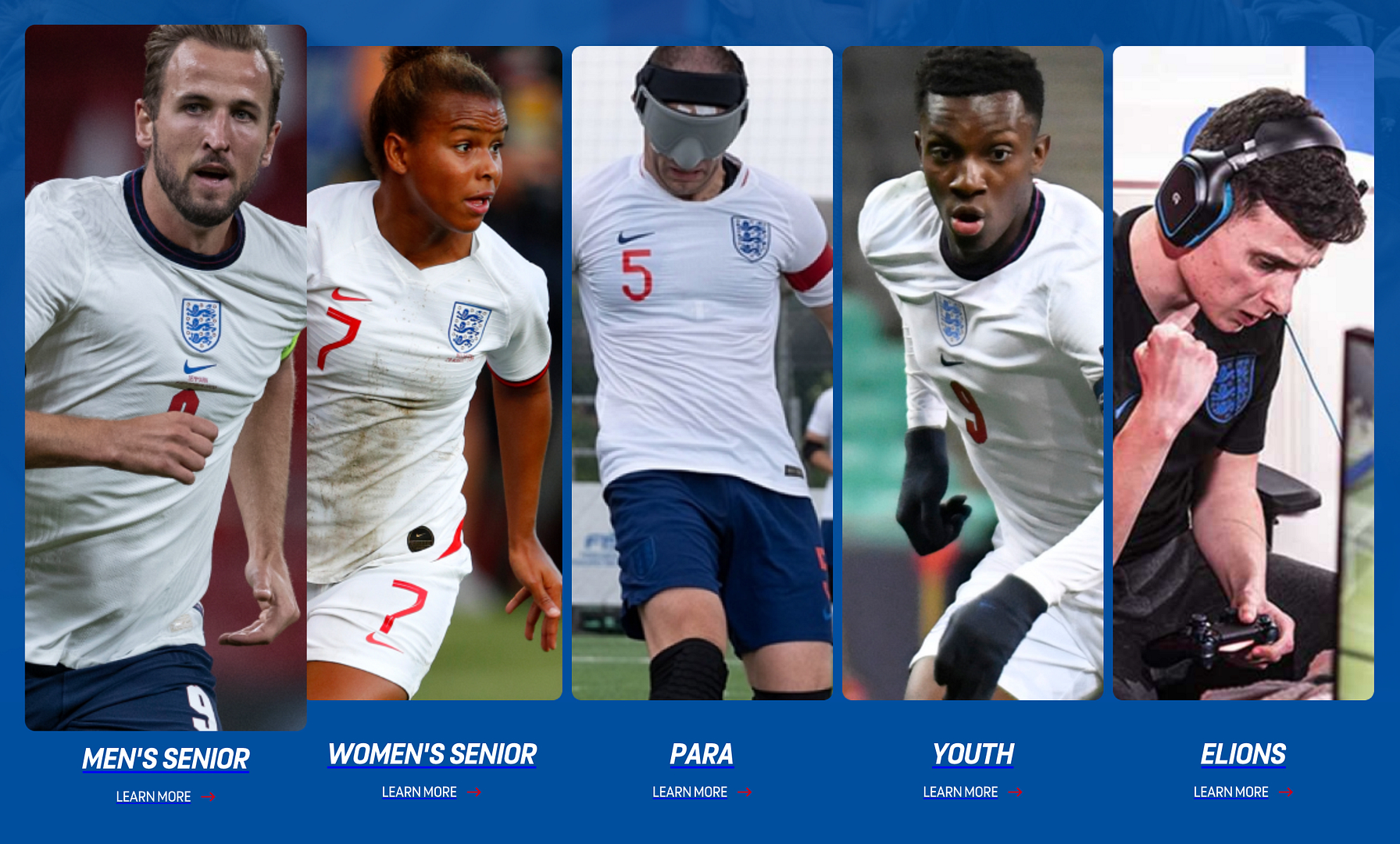
Star-Studded All Inclusive Video
Along with their new website and England badge redesign, a promotional video made by COPA90 was also released. The video further emphasises the message of celebrating the diversity of football, with footage of players and fans from all colours, creeds and backgrounds being featured. Big names like Azeem Amir, Demi Stokes, Harry Kane, Lucy Bronze, and Marcus Rashford all feature in the video with the line “There’s no football without them all” being used.
Also shown on the video is football being played by children, people on crutches and in wheelchairs and fans and supporters are also acknowledged with shots of jubilant crowds and parents taking their children to football practice. In fact, even a gamer playing FIFA makes the cut with everyone included in the statement “We are a team of millions”.
A story told through symbols
The three lions redesign was made by creative agency MATTA to reflect the FA’s goal of uniting people through football with the male lion, lioness, and lion cub representing men’s, women’s, and children’s football clubs.
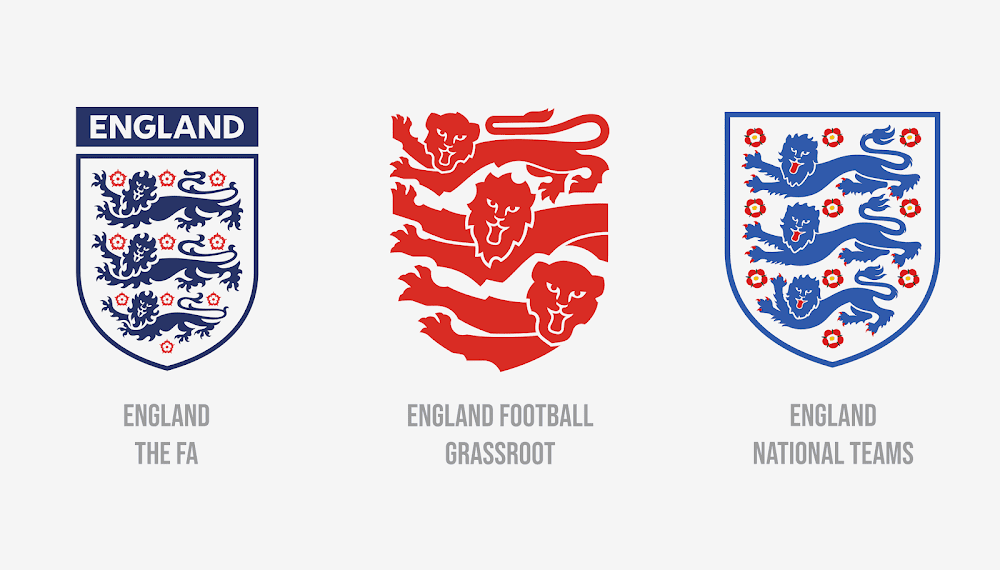
Examining The Three Lions Redesign
Other than the obvious changes to the lions, there are many more subtle design elements that speak to England Football’s message. For example, the England Football logo has had the shield outline removed. The edges of the shield are now formed by the lions themselves, symbolising their independence to form their own shield and rely on their own strength.
Louis Swann, Creative Director for MATTA says this was done as a “visual way to show that football can break boundaries.” Remaining consistent with the rest of the FA’s wider branding design, the new badge makes use of the same “striking red colour” and similar lettering.
As the design will be appearing alongside the original England badge, this makes sense aesthetically but also on a symbolic level, as this speaks to the cohesion between the elite and grassroots clubs.
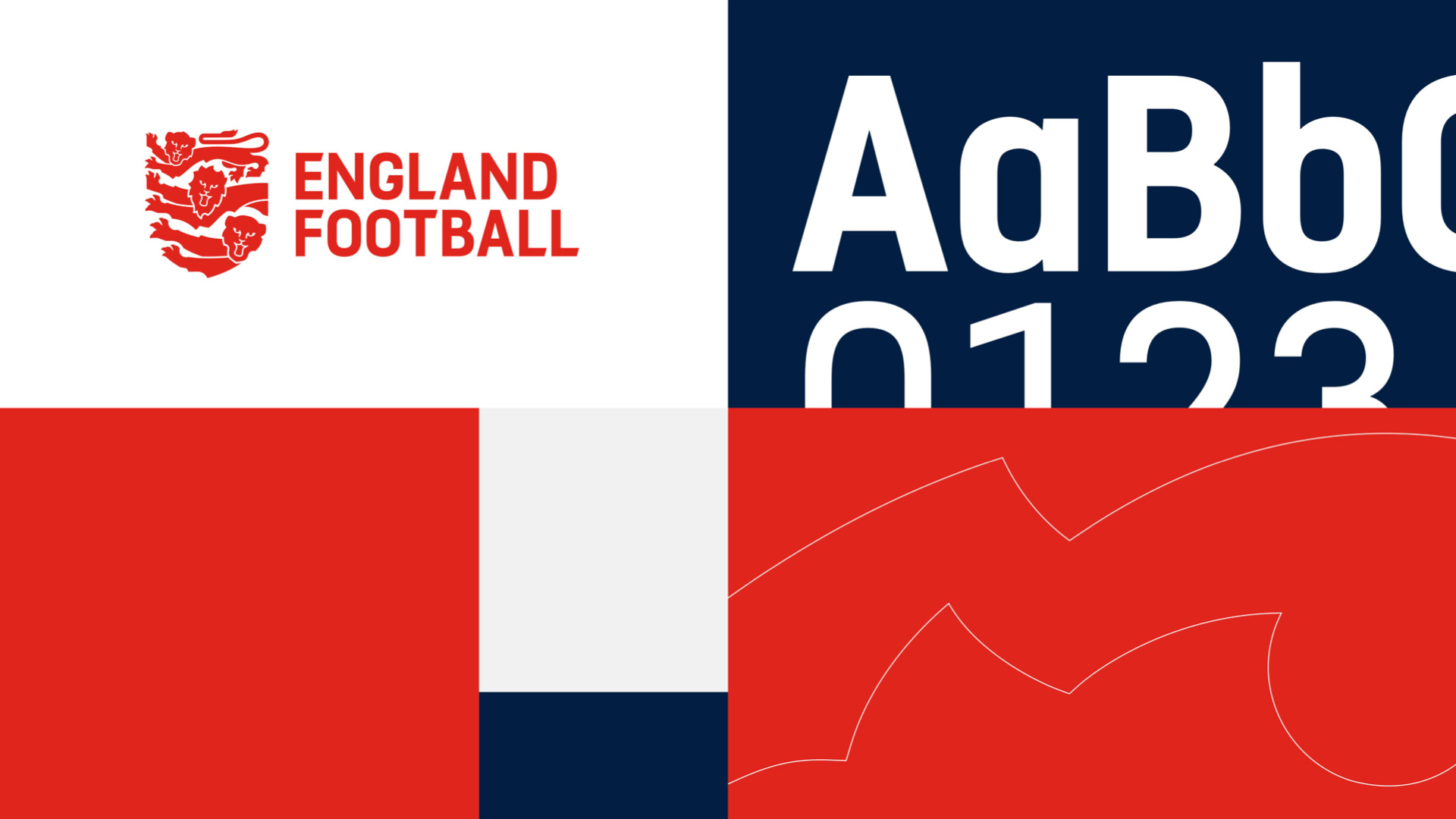
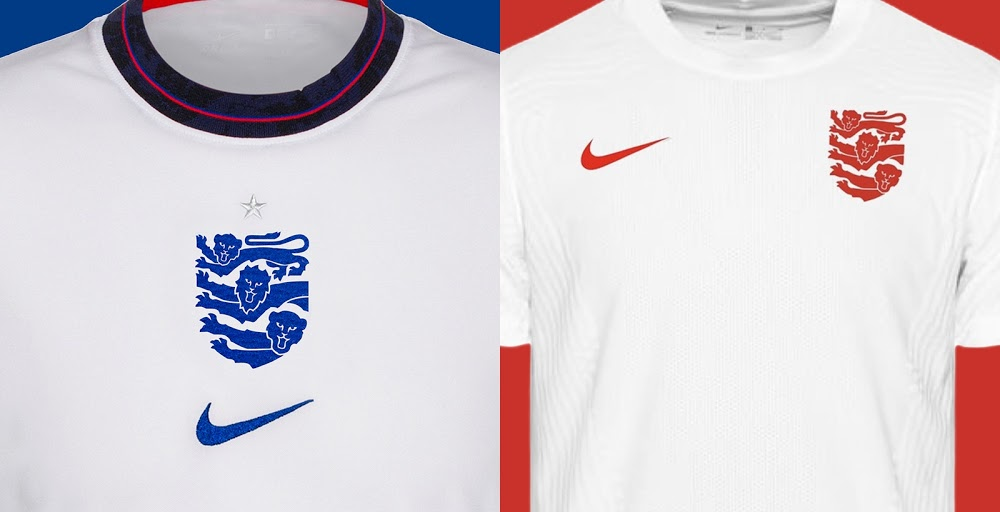
A bit of English History
The red colouring is also reminiscent of the original coat of arms that the FA crest is based on. The lion emblem dates back to the 12th century when it was carried into battle as a banner of arms. King Henry I was supposedly the first to have a lion on his coat of arms, with the second lion being added when he married Adeliza de Louvain, whose family crest also featured a lion.
Some years later, Henry II would add a third lion on his marriage to Eleanor of Aquitaine who also came from a family with a lion crest.
The England Football logo’s use of red is more consistent with the original red and gold emblem and, according to Swann, with the 45-degree angle of the lions’ heads representing the curvature of a shield. In this way, it not only pays homage to the three lions’ use in football but also as a national emblem, showing a respect for the history of the sport and the country while also acknowledging that the underrepresented have been a part of it all along.
Swann said that while they aimed to show a modernised rendition of the logo, they didn’t want to take it “too far.” He also acknowledged that it was a risky move to make changes to such a beloved and long-standing emblem, stating that when it came to “iconic” logos such as these “you touch them at your peril.”
Trouble in paradise
With the launch of England Football’s new brand and website design, the FA aims yet again to tackle the persistent inequality and prejudice in football. Reports have shown two-thirds of female footballers reporting discrimination and the issue of equal pay remains contentious. Black footballers continue to be subject to racist abuse and homophobia is still an issue in the sport, as openly gay professional footballers are few and far between.
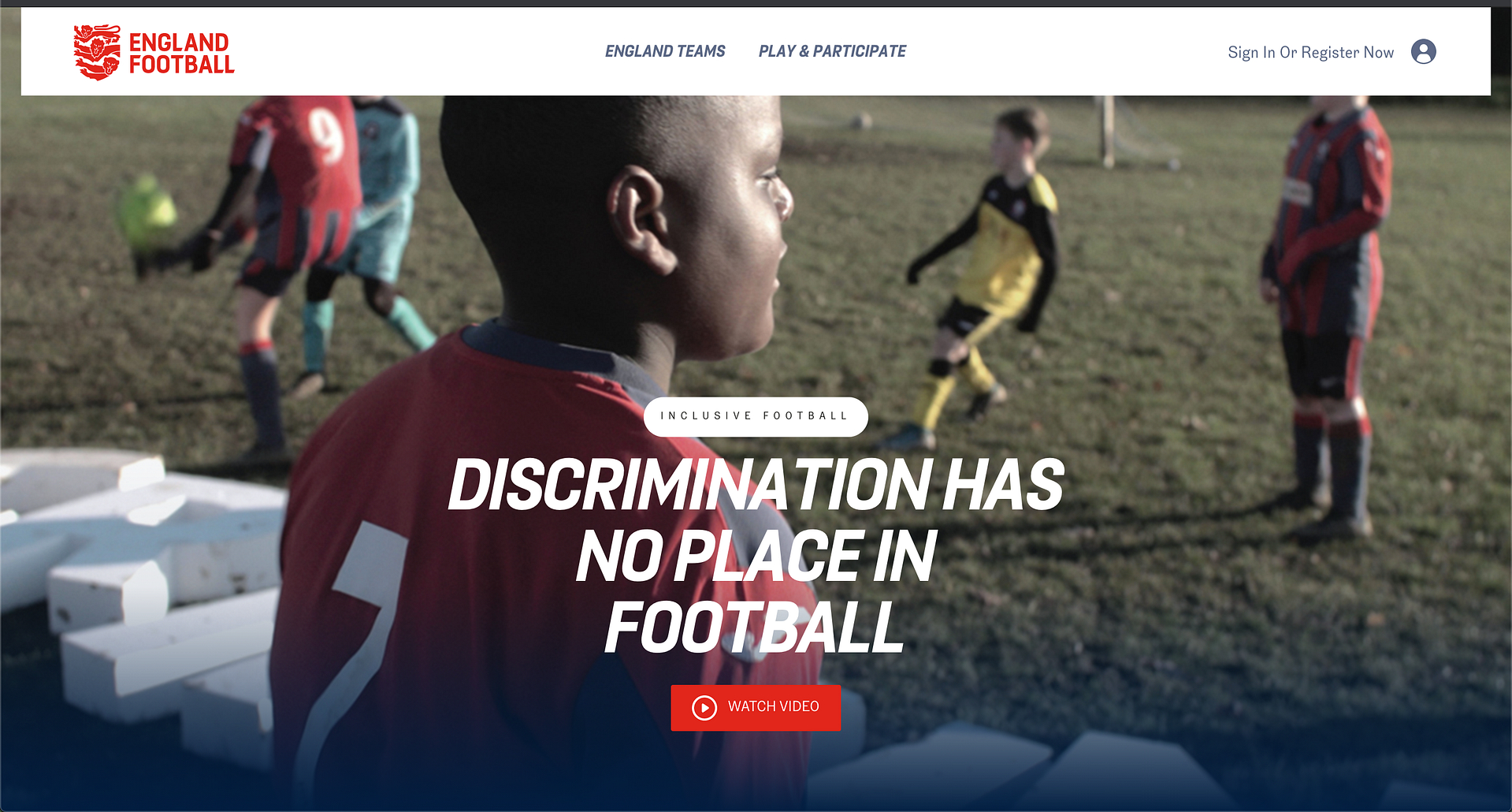
So What Did They Achieve?
The outrage over the three lions redesign can be interpreted in a few different ways. Perhaps, in keeping with the theme of overturning long-standing prejudice, it’s appropriate that the move be met with controversy – even if it is misplaced. Some might say that to move the sport forward it is unavoidable and even necessary to ruffle the feathers of those that are holding it back.
Conversely, it could be argued that the outrage stems from the perception that the move is tokenistic. For many, corporate involvement in social issues all too often rings hollow and feels like a tepid effort to achieve the bare minimum. Think of the disastrous Pepsi advert with Kendall Jenner walking through a protest to hand a can of Pepsi to a police officer.
While opinions on the logo and initiative will vary from person to person, this remains a powerful example of the significance of branding, of how much can be said with a simple image, and how much fervent dedication can be inspired by an emblem over centuries.